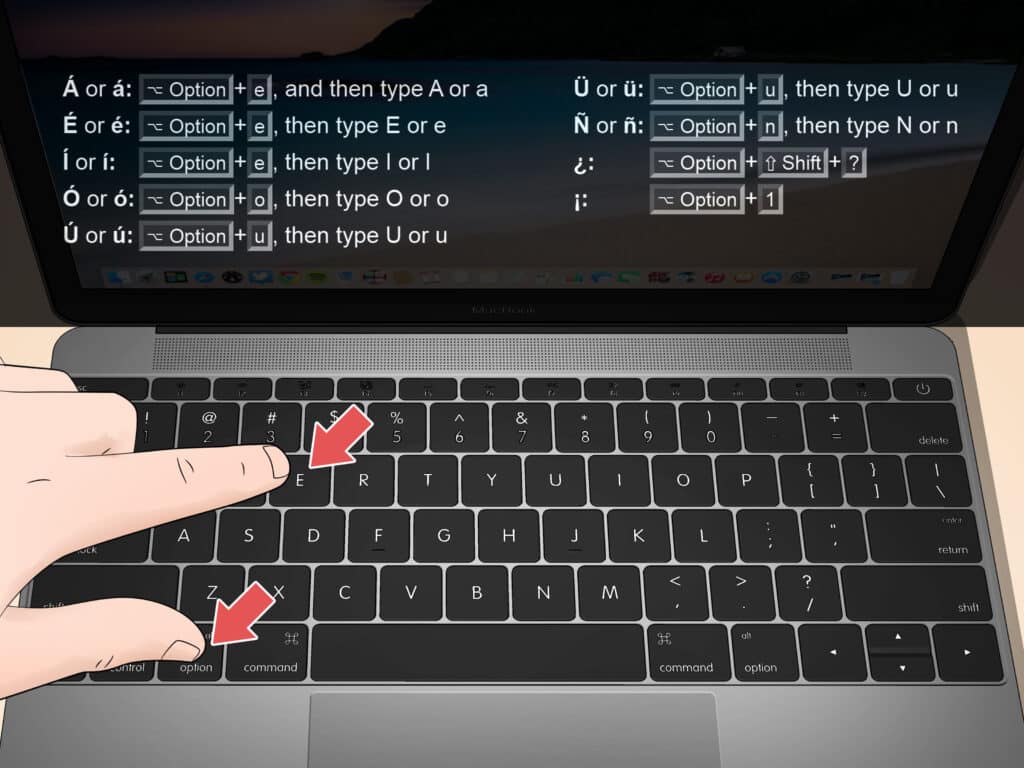Alike French accent marks the Spanish accent marks are also very IMPORTANT but is quite CONFUSING.
And after writing my last blog on the French accent marks I thought let write the article on the Spanish accent marks – the accent marks that go above Spanish letters.
Spanish accent marks play a very vital role and if not used properly it completely changes the meaning of the word.
Well, the Spanish accent marks continue to perplex until you have a proper understanding of Spanish accent rules.
Therefore it is necessary to understand the difference between the solo (alone) and sólo (only) if you want to read and write Spanish excellently.
- What are the Spanish Accent Marks?
- 1: The Tilde in Spanish (ñ)
- 2: The Diaeresis in Spanish (ü)
- 3: The Acute Accent in Spanish
- What Is Word Stress?
- Spanish Word Stress and How it is Related to Spanish Accents
- #Rule 1: Words Ending in a Vowel, n, or s
- #Rule 2: Word Ending In a Consonant except “n” or “s”
- #Rule 3: Word Having Acute Accent
- Breaking Spanish Words into Syllables
- Why Some Words Are Accented In Some Forms, But Not Others?
- Using Acute Accent to Differentiate Homonyms in Spanish
- Spanish Accent Marks and Question Words
- Spanish Accent Marks: Difference Between Demonstrative Pronouns & Adjectives
- How to Type Spanish Accents
- How to Type Spanish Accent Marks on Windows:
- How to Type Spanish Accent Marks on Mac
What are the Spanish Accent Marks?
First start with the basics, the “accent marks” are also known as diacritics (the extra symbol added to the letter).
And in the Spanish language there are three accent marks or diacritics:
- The Tilde (ñ).)
- The diaeresis (ü),
- The acute accent (é)
Here the grave accent (è) or circumflex (ê) is missing.
The best part is the accent marks are all about the Spanish spelling and follow very constant rules. So it is easy to learn.
Here I am describing everything about the Spanish accent marks – how and when they are used, how to pronoun and as well as how to type them on Windows and Mac OS.
So let’s start…
1: The Tilde in Spanish (ñ)
This Spanish accent mark is only found above the letter “n”: “ñ”. Well, the “n” without accent mark in Spanish is pronounced like English “n” but the tilde “ñ” is pronounced coarsely like English “ny”.
Remember in the Spanish language “n” and “ñ” are considered two totally separate letters. Also, they have dissimilar names – “ene” vs. “eñe” and are listed individually in the dictionary.
And on the Spanish keyboard, they have separate keys.
You might be thinking in English word “tilde” completely refers to the symbol “~”, but the Spanish cognate tilde is utilized to mention to diacritics or accent (é) in general.
2: The Diaeresis in Spanish (ü)
This Spanish accent mark has two dots above a letter name diaeresis (pronounced “die heiresses”).
In some cases, people call it an Umlaut, but to be very precise an umlaut and a diaeresis are totally different accept looking identical.
Well, the Spanish language won’t have umlauts only diaereses are seen on some of the words. In Spanish, there are not many words that use a diaeresis.
Here check out some of them:
- ambigüedad – ambiguity
- argüir – to argue
- antigüedad – antiquity
- bilingüe – bilingual
- cigüeña – stork (the bird)
- desagüe – drain
- lingüista – linguist
- lingüística – linguistics
- monolingüe – monolingual
- paragüero – umbrella stand
- pingüino – penguin
- piragüista – canoeist
- vergüenza – shame
You can spot the pattern, in all the words, the diaeresis is above the letter “u”, and the “ü” always comes after the “g” and instantly before an “e” or “i”.
Well to understand it better, read the below-given example with apt attention:
Let’s consider how the letter combination “gue” and “gui” are pronounced when they are without the diaeresis.
Generally, the “g” in Spanish is pronounced like English “g”. But when it is followed by “e” or “i” for example:
- gemelo (twin)
- girar (to spin)
It becomes rough, you can hear “h” like the sound from the back of your throat. The same sound that commonly written in Spanish as a letter “j”.
Therefore the gemelo is pronounced as it was written jemelo.
But here comes a twist, what if you have an “e” or “i” and also want to preserve the “g” sound without turning into a “j”?
And Spanish do this by sticking a “u” in the middle for example in the words like:
- guitarra (guitar)
- manguera (hose)
This extra “u” is silent and is here to tell you the “g” should be pronounced like a regular “g” and not like a “j”.
Hold no here comes another twist – what if you don’t want the “u” to be silent? And here the diaeresis “ü” comes in.
You can see the words (pingüino, desagüe) listed above that require the “u” should be pronounced out loud like regular “u”.
Therefore the pingüino is pronounced like “peen-GWEEN-oh”.
- pingüino
But if you don’t have the diacritic on the “u” it would be pronounced “peen-GHEEN-oh”.
So, this is all about the Spanish accent – diaeresis, I hope you are able to understand this Spanish accent mark completely.
Now it is the time to understand the last but the toughest Spanish accent mark.
3: The Acute Accent in Spanish
Well, this is the difficult Spanish accent mark. The Acute accent (é) is the most common diacritic in the Spanish language.
This Spanish accent is found above on the five vowels – á, é, í, ó, ú.
Commonly, this Spanish vowel with accents is utilized for denoting Word Stress.
First, learn what is word stress to understand the acute accent better?
What Is Word Stress?

In linguistics, stress is an idea that is in a word with more than one syllable or syllables are emphasized during the speaking.
Understand in simple words, this means the syllable is pronounced louder and lengthier than its neighbors.
In English, the word stress is used generously, and it is important to get it right. For example:
In the word “Language” the first syllable is stressed – “LANG-gwij”. But if you stress on the second syllable by saying “lang-GWIJ” – it would sound very strange to the native English speaker.
Also in some cases in English changing the stress would change the meaning of the word, for example, “Weather” can be pronounced as “WEAH -thr” (as a climate) or “weah-THER” (used for expressing a doubt like if or not.)
The English spelling won’t let you understand much like where to put the stress, but Spanish is very much KIND.
Spanish Word Stress and How it is Related to Spanish Accents
Well, the Spanish spelling is highly reliable and from the spelling of the Spanish word, you should accurately know how to pronounce it and is needed for word stress.
And while reading a Spanish word, you can easily apply the constant rules every time to understand which syllable accepts the emphasis.
So, here you need to understand the Spanish Accent Rules, and the rules go like this:
#Rule 1: Words Ending in a Vowel, n, or s
If the word ends in a vowel, the letter “n” or the letter “s” then the stress is on the next to the last syllable. For example:
- todo = “TO-do”
- inteligente = “in-te-li-GEN-te”
- joven = “JO-ven”
- computadora = “com-pu-ta-DO-ra”
- hombres = “HOM-bres”
#Rule 2: Word Ending In a Consonant except “n” or “s”
Here if the word ends in all consonant but except the letter “n” or “s”, then stress the last syllable. For example
- español = “es-pa-ÑOL”
- comer = “co-MER”
- trabajador = “tra-ba-ja-DOR”
#Rule 3: Word Having Acute Accent
If the word has the Spanish acute accent then ignore the above rules and just stress the accented syllable. For example:
- habló = “ha-BLO”.
- jóvenes = “JO-ve-nes”
- inglés = “in-GLES”
- estábamos = “es-TA-ba-mos”
Note: Just remember the simple rules and that’s it you will be fine most of the time. You need to know them as a beginner.
Well, this might break down further. This is for the beginners and helps for clarifying what I mean by a “syllable”.
Breaking Spanish Words into Syllables

Commonly when the vowel is not next to another vowel, then it forms its own separate syllable. For example:
- hablo – two syllables, “HA-blo”
- examen – three syllables, “e-XA-men”
- comfortable – four syllables, “com-for-TA-ble”
But when the word has two or more vowels in a row like creo or acuerdo, this gets somewhat COMPLICATED.
And to understand it properly, read this with apt attention:
First, you need to understand the vowels – “a”, “e” and “o” are the Strong Vowels in the Spanish language. And the letter “i” and “u” are Weak Vowels.
And the two strong vowels in a row are measured to be two separate syllables. Let describe it best with the examples:
- creo – “CRE-o” – two syllables,
- cuando – “cu-A-ndo”- three syllables,
- coreano – “co-re-A-no” – four syllables,
Now a strong vowel with a weak vowel or two weak vowels together should be a single syllable.
Please Note – When two vowels form a single syllable, it is called a Diphthong.
- Aire – AI –re – two syllables
- saliera –sa-LIE-ra – three syllables,
- fui – FUI – one syllable,
Well, the difference will help you to understand where you need to put stress.
For instance, in word maestro has two strong vowels, so the stress goes on the first of the two: “MA-es-tro”.
On the other hand, the word “baile” is a diphthong so the stress goes somewhere else: “bai-LE”.
But what if the word stress is on a diphthong? Like the word:
- Durmiendo – “sleeping” –“dur-MIEN-do”
This has three syllables and no written accent and also ends in a vowel. Therefore the stress is on the diphthong in the middle. Well, there is no reason behind this.
Generally, a diphthong is pronounced with a bit more emphasis on the second vowel rather than the first. For example – hoi the “i” is a little stronger than the letter “o”.
But, in some cases the two vowels are not pronounced like a diphthong, in fact, they are pronounced as two separate syllables completely.
And in this situation, the word is written with an accent to let you understand it is an exception. For examples:
- compraríamos (“we would buy”)
- ¿Quién? (“Who?”)
- tío (“uncle”)
Now you might be thinking how does the letter “h” in búho affect the placement of the accent?
Well, the answer is it does not. The RAE (Real Academia Español) has ruled that for the determinations of word stress and written accents “h” has no outcome.
So it is treated as it was not there entirely, and therefore the “u” and “o” in búho are reflected to form a diphthong even there is an extra letter between them.
Why Some Words Are Accented In Some Forms, But Not Others?
Now can you tell why jóvenes is written with an accent, but the word Joven is not? I’ll tell you the word “Joven” means “young” whereas jóvenes is the plural form:
- El hombre Joven = the young man
- Los hombres jóvenes = the young men
And in the singular form, the first syllable “jo” is stressed. And the word ends with “n” so there the Rule#1 applies, the stress is on the next to the last syllable, which here is the first syllable gets the stress.
But when it is in plural form, we add an extra syllable.
With no written accent, we have jovenes and the stress would obviously fall on the second syllable “ve”. But this is wrong, the stress needs to stay on “jo”. Therefore an accent is added to show that in spite of the pluralization, the “same” syllable has the stress.
You can see this in another place while combining pronouns with imperative verbs. For example in the word cómpramelos (buy them for me). Here the accent is required because without it, the stress would become “com-pra-ME-los”.
Using Acute Accent to Differentiate Homonyms in Spanish
Now after explaining how acute accent affects word stress in Spanish. There is one other function as well that you need to know.
In English the words “there”, “they’re” and “their” “right” and “write” are pronounced the same. Some people might find this hard.
Alike Spanish also has words like this, but it deals with it very neatly. Here the first word it is written with an acute accent and other without accent marks. For example:
- Sí – “yes”
- Si – “if”
Well both the words are pronounced the same way, only the accent matters in the writing.
Check out the below-given pairs of words to understand better.
| Unaccented Spanish word | English | Accented Spanish Word | English |
|---|---|---|---|
| de | of, from | dé | give (third-person singular present subjunctive) |
| el | the (masculine singular) | él | he |
| mas | but* | más | more |
| mi | my | mí | me (object pronoun) |
| se | (reflexive pronoun) | sé | I know |
| si | if | sí | yes |
| te | you (object pronoun) | té | tea |
| tu | your | tú | you |
NOTE: The word mas, means “but” is used very rarely in everyday speech, you can use pero instead.
Spanish Accent Marks and Question Words
Below check out the words that may also be written with or without an accent:
- ¿Cuál? (Which?)
- ¿Cuándo? (When?)
- ¿Cuánto? (How much/many?)
- ¿Cómo? (How?)
- ¿Dónde? (Where?)
- ¿Por qué? (Why?)
- ¿Qué? (What? / Which?)
- ¿Quién? (Who?)
To understand it remember the thumb rule: when these words signify a question, write them with an accent but when they represent a statement or a speech, avoid including an accent.
- ¿Quién es él? – “Who is he?”
- Es el chico de quien te hablé – “He’s the guy who I told you about”
Well, this trick works for you 90% of the time. But here read some more detail.
If the question word is utilized in indirect question, it will have an accent, like:
- Quiero saber quién eres – “I want to know who you are”
- No sé dónde está – “I don’t know where he/she/it is”.
But if the question word is the word is utilized as a pronoun, it is without accent:
- Es la ciudad Donde se pasó – “It’s the city where it happened.”
- Me iré cuando él llegue – “I’ll go when he arrives”
Well, Cómo “how” with an accent whereas Como without an accent means “as” or “like”.
(Unexpectedly, Como is the first-person singular present form of comer also means “to eat”.)
- Me explicó cómo hacerlo – “He/she explained to me how to do it”
- Tan grande Como un Elefante – “As big as an elephant”
And when qué means “what,” then write using an accent, for example:
- Por favor, móstrame qué hacer – “Please, show me what to do.”
- ¡Qué día más bonito! – “What a lovely day!”
Also when cuánto/cuánta/etc means “how much/many”, then write it using an accent:
- Me dijo cuántas personas vendrían – “He told me how many people would come”
REMEMBER: In all these examples, the accent won’t change the word’s pronunciation Como, Cuando, Donde, etc. are stressed on the first syllable anyhow. (Here the word stress rule implies).
Writing them using the accent cómo, cúando, dónde, etc. won’t change anything related to word stress. The only difference is in the writing.
Spanish Accent Marks: Difference Between Demonstrative Pronouns & Adjectives
Well, this is the one last words set that you need to understand – Demonstrative Pronouns and Demonstrative Adjectives.
The demonstrative adjective is a word which defines a noun such as “this” or “that”:
- Este carro – “this car”
- Esa persona – “that person”
- Aquellos Libros – “those books”
Well in English the words “this/these” are used for the things that are close and “that/those” for the things that are far away.
Spanish has three degrees of distance, check the below table to understand better.
Just like Spanish adjectives, the demonstrative pronouns should also agree with the noun in number and gender:
| distance | masculine singular | feminine singular | masculine plural | feminine plural |
| near | este | esta | estos | estas |
| far | ese | esa | esos | esas |
| further | aquel | aquella | aquellos | aquellas |
Well, in English we can clearly say “this one” or “that one” to signify something and it is obvious.
This similar thing can be done in Spanish except “this/that one” is translated to a single word:
- Éste es mi carro – “This is my car”
- No Tengo ésa – “I don’t have that one”
These are demonstrative pronouns and are alike the demonstrative adjectives, but they stand by themselves without a need for a supporting noun. And they should match the noun they replace in number and gender.
| distance | masculine singular | feminine singular | masculine plural | feminine plural |
| near | éste | ésta | éstos | éstas |
| far | ése | ésa | ésos | ésas |
| further | aquél | aquélla | aquéllos | aquéllas |
Also, the demonstrative pronouns are written with accents but the demonstrative adjectives are not. Their pronunciations are also the same.
Only through writing, you can differentiate the two types of word.
- Este carro no es tan rápido como ése – “This car isn’t as fast as that one”
- “¿Tienesaquellibro de que te hablé?” “No, sólo tengoéste.” – “Do you have that book I was telling you about?” “No, I only have this one.”
Also, there is no strict rule that always the demonstrative pronounce is used with an accent. There are “neuter” demonstrative pronouns as well like:
- esto (this)
- eso (that)
- aquello (that over there)
This can be used to mention abstract concepts and ideas when no specific noun is replaced such as:
- Me gusta, y eso es lo importante. – “I like it, and that’s the important thing”.
You can also use them or an object when the gender is unknown and as the gender is established, you need to use accent marks to éste/ésta/ése etc.
- ¿Qué es aquello? – “What’s that?”
- Aquélla es mi casa – “That’s my house”
NOTE: The words esto, eso and aquello, unlike other demonstrative pronouns, are written without an accent, because there are no demonstrative adjectives with the same pronunciation, therefore adding an accent will not change anything.
How to Type Spanish Accents
Now looking at how to type Spanish words with accents? Don’t just copy and paste the character, well there are ways that work for you to type the Spanish accent marks:
Here check out the ways to type them on a Windows PC or on a Mac:
How to Type Spanish Accent Marks on Windows:
Use the below-given shortcuts to type Spanish words with accents on Windows PC:
- To write Spanish vowels with accents press Ctrl + ‘ + vowel
- And to write “ñ”, press Ctrl + ~ +“n”
- To write “ü”, press Ctrl +: + “u”.
But if that won’t work for you then try to input the character code directly. Every accented character could be entered with four-digit code
Please Note: Here you need to type the numbers with the right side number pad.
| Character | Code |
| á | Alt + 0225 |
| é | Alt + 0233 |
| í | Alt + 0237 |
| ó | Alt + 0243 |
| ú | Alt + 0250 |
| ñ | Alt + 0241 |
| ü | Alt + 0252 |
How to Type Spanish Accent Marks on Mac
Commonly you can type “special characters” on Mac with the Option/Alt key. The one labeled “⌥” between “ctrl” and “cmd”. Here learn how to do so:
| Character | Code |
| á/é/í/ó/ú | Press “alt” + “e” together, leave it and press the vowel you want |
| ñ | Press “alt” + “n” together, leave it and press “n” again |
| ü | Press “alt” + “u” together, leave it and press “u” again |
Moreover, depending on the keyboard and system settings, you can also able to type special characters holding down a regular letter key.
For example: When I press e on my Mac for a while for so:

And to get accented “é”, press “2”.Overall, it may be said…
The Spanish accent is quite perplexing but is equally necessary to asombrar (amaze) the natives.
Here my job is done, and I think after reading the article, you clearly understand the Spanish accent Marks.
I tried my level best to give accurate examples to describe and memorize you the Spanish accent marks its rules, Word stress, pronunciation, etc.
I hope the article turns out to be helpful for you and all your confusion with the Spanish accent fades away.
Moreover, there are many language learning apps that help you to master Spanish in no time. And if you are really thinking to go for the one then Mondly is the best one.
Nevertheless, if there is anything I missed out or you have easy tricks to learn the Spanish accent accents then we love to hear from you…!
Source: Fluent in 3 Months
Good Luck…!








